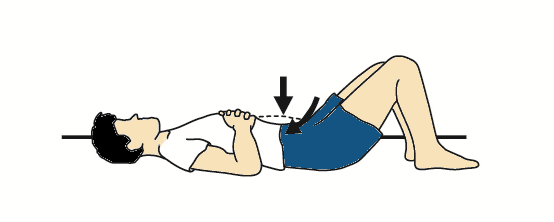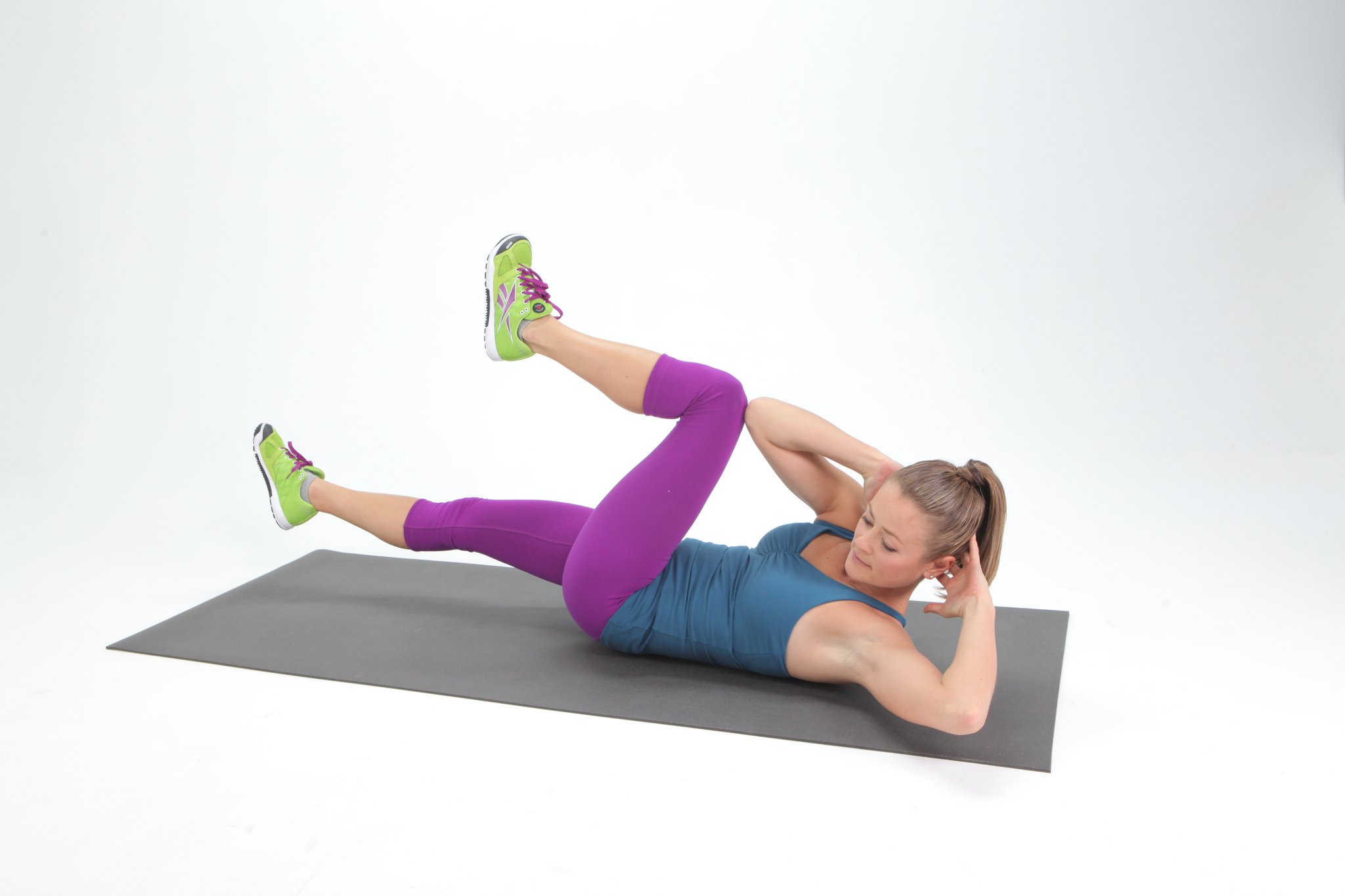Author: Kim Seymour, PT, DPT
Doctor of Physical Therapy and Blog Contributor. Loves sharing fun facts and believes knowledge is power. Health food, coffee, chocolate and travel junkie and wannabe yoga regular. Believes in the body’s inherent strength and resiliency and has a particular interest in pre- and post-partum care and pelvic health. Learn more about Kim here.
Many of you may have heard the NPR segment on “Mummy Tummy” which essentially recommended one exercise daily for about 10 min per day to treat diastasis rectus abdominis (DRA) or widening of the abdominal muscles during pregnancy. The exercise concept was based on a pilot study conducted on 69 post-partum women who had DRA. Following a sustained, 10 min hold of the lower abdominal muscles, the majority of women saw a decrease in the separation of their DRA and also a decreased waist circumference - very promising results! The physical therapy community wrote a response to this segment on NPR and NPR actually broadcasted and posted their response. Below I have summarized what I believe are the two take-aways in response to the “Mummy Tummy” approach:
http://www.anniewestpilates.com/threeredsprings/lets-talk-about-abs
see reference for image credit (1)
1) The physical therapy community did not like that the story made it seem like just doing a lower abdominal (transversus abdominis [TrA]) contraction for 10 min a day is enough for DRA. There are a lot of other exercises! Additionally, performing this exercise alone does not address the specific components of muscle coordination, overactivity, and sequencing that may be contributing to DRA.
http://www.inspirewomensfitness.com/diastasis-recti-is-abdominal-separation-stopping-you-from-achieving-a-flat-belly
This is not to say that I never give post-partum women a TrA contraction. It is extremely important that the TrA muscle is activating properly and providing tension in the connective tissue (fascia) of the stomach in order to treat DRA. From the literature, we know that the fascia that has widened during pregnancy will not be tensioned properly if the TrA muscle is not activated. We also know from the literature that performing TrA exercises alone is beneficial for improving DRA (Note that there are studies that report widening of the inter-rectus diameter [IRD] with TrA exercises versus braced crunching. We used to think that in order to "treat" DRA we had to narrow the IRD. We now know that sometimes the IRD widens, but overall improvement of DRA from a muscle function and even aesthetic perspective still improves.) Widening of the IRD DRA is not a problem of just one muscle, but rather it is important to understand how all of the abdominal and even pelvic muscles work together to stabilize the abdomen and spine. Some women, in fact most women may need to start with just a TrA contraction and breathing, but ultimately they need to be progressed to include strengthening of the rectus abdominis (those 6 pack ab muscles) and the obliques (especially the internal obliques). Everyday activities in life involve using not only our TrA, but our rectus abdominis and our obliques, so all of the abdominal muscles need to be trained and strengthened properly. Women need to be able to perform these exercises without tenting and the timing of when they will be ready for these progressions varies person to person.
I would also argue that while the study had the women doing a sustained TrA contraction for 10 min at time, one time per day, I would suspect that the women in this study were mostly likely engaging their abdominal muscles differently throughout the day, whether or not they were doing the specific exercise for the study. In other words, they most likely had increased awareness of their abdominal muscles and using their TrA and were probably engaging these muscles more and more in daily activities like lifting their other child, or heavy groceries, or walking, or performing other exercise, all of which is beneficial for DRA and is recommended by all physical therapists post-partum. Therefore, some of the benefits claimed in this study may have been from participants in the study using their abdominal muscles differently during functional activities versus only obtaining benefits from doing a 10 minute long TrA contraction.
see reference for image credit (2)
2) The personal trainer in the article said moms should never do bicycle crunches or other more advanced abdominal exercises like leg lifts or scissor kicks. The physical therapist community strongly disagrees! While it is true that some of these more advanced exercises early on in the post-partum healing process can be too intensive and can make DRA worse, we do not agree that these exercises should NEVER be performed for the REST OF YOUR LIFE! Some women have absolutely no doming and maintain good fascial tension when performing these types of exercises and these more advanced exercises can be really beneficial for helping DRA and improving overall strength and function. Ultimately, your physical therapist should be able to palpate your abdominal muscles and feel what's happening when you perform an exercise to best determine what's safe and what's not safe for you.
We have to remember that for no scientific reason, women have been put on bed rest during “high risk” pregnancies. For no scientific reason, women athletes have been criticized by some for training and maintaining a high level of activity during pregnancy. In fact, more and more research is showing the benefits of regular exercise for both the mother and baby’s health both short-term and long-term. It is true that we don’t always have a lot of scientific evidence on pregnancy and pre- and post-partum conditions either because it’s a “woman’s problem” or because it is challenging to perform tests on these populations due to the possible risk to the baby or the mother. However, I would argue that we certainly do not have enough scientific evidence to say that women should NEVER perform more advanced abdominal exercises. Clinicians that have been treating DRA for a long time report marked improvements in patient’s DRA with specifically tailored progressions to more advanced abdominal exercises, some of which may include bicycle crunches and leg lifts. In short, you ultimately know your own body better than anyone, so don’t feel limited by dialogue that may not be based on the best data and research that’s available.
Here's the full Mummy Tummy NPR article if you want to read it:
References
Image Credits
(1) https://www.google.com/imgres?imgurl=http%3A%2F%2Fwww.carterpt.com%2Fwp-content%2Fuploads%2F2014%2F01%2Fbigstock-Physiotherapist-pressing-patie-52040110-e1391114574854.jpg&imgrefurl=http%3A%2F%2Fwww.carterpt.com%2Fhow-to-instruct-transverse-abdominis-contraction%2F&docid=9YDvdPAzJ6_MaM&tbnid=x6yVhppC2nUTHM%3A&vet=10ahUKEwit9pnO1qjZAhVSxWMKHV7dAZoQMwiHASgSMBI..i&w=250&h=166&bih=941&biw=1920&q=transversus%20abdominis%20contraction&ved=0ahUKEwit9pnO1qjZAhVSxWMKHV7dAZoQMwiHASgSMBI&iact=mrc&uact=8
(2) https://www.google.com/imgres?imgurl=https%3A%2F%2Fmedia4.popsugar-assets.com%2Ffiles%2Fthumbor%2FPS7px-zLs6TeYKGt6-r-c6tNHig%2Ffit-in%2F2048xorig%2Ffilters%3Aformat_auto-!!-%3Astrip_icc-!!-%2F2016%2F01%2F05%2F028%2Fn%2F1922398%2F9f869e895152330b_Bicycle1.JPG&imgrefurl=https%3A%2F%2Fwww.popsugar.com%2Ffitness%2FHow-Do-Bicycle-Crunches-958400&docid=wHdB1J2r4fP8-M&tbnid=nLlNhUMihH0XYM%3A&vet=10ahUKEwiOsMPg26jZAhVC52MKHTYfBP8QMwinASgFMAU..i&w=2048&h=1365&bih=941&biw=1920&q=bicycle%20crunches%20exercises&ved=0ahUKEwiOsMPg26jZAhVC52MKHTYfBP8QMwinASgFMAU&iact=mrc&uact=8







